What Is Organization Development?
The 5 Phases of Organization Development (OD)
Organization development (OD) focuses on improving a company's capability through the alignment of strategy, structure, people, rewards, metrics, and management processes. It's a science-backed, interdisciplinary field rooted in psychology, social sciences and human resource management. OD centers on culture, innovation, adult education, change management, organization behavior, and research design.
Organization development involves an ongoing, systematic, long-range process of driving organizational effectiveness, solving problems, and improving organizational performance. OD is one of the capabilities identified in the Talent Development Capability Model.
What Is the Difference Between OD and Human Resources (HR)?
Many OD interventions relate to human resource management and talent management. HR initiatives tend to focus on people practices. Meanwhile, organization development zooms out to consider multiple inputs across the depth of the organization. OD is more holistic and strategic whereas HR departments are systematic.
Like talent development, sometimes OD functions are under the HR umbrella.
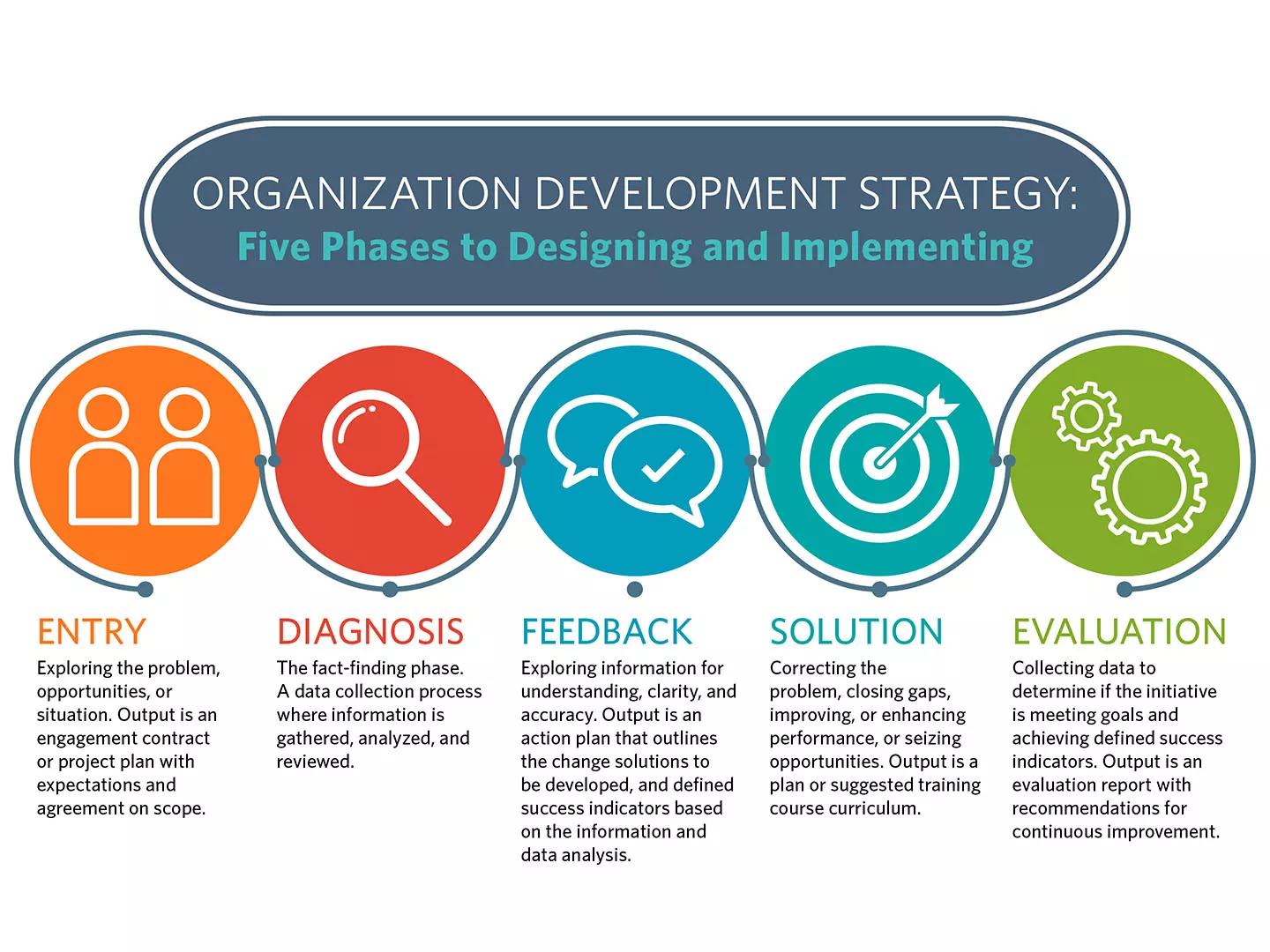
OD Strategy: Five Phases
OD Strategy: Five Phases
TD professionals should integrate OD skills with the growing number of L&D, performance improvement, and talent management solutions focused upon increasing organizational effectiveness. OD practitioners use a structured process to design and implement organizational development strategies in these five phases.
Entry- the initial contact between consultant and client. They present, explore, and identify the problem, opportunities, or situation facing an organization. The goal is to create a contract or project plan that establishes mutual expectations about project scope. There should be initial agreements on the use of resources.
Diagnosis (assessment)- the fact-finding phase. This is a collaborative data gathering process between organizational stakeholders and the consultant. During this phase, we gather, analyze, and review relevant information about the problem.
Feedback- the return of analyzed information to the client or client system. OD professionals will explore the information for understanding, clarity, and accuracy, and review preliminary agreements about scope and resource requirements. This phase typically creates an action plan that outlines the future change solutions and establish indicators.
Solution- the design, development, and implementation of the steps meant to correct the problems and enhance organizational performance. Solutions may include a communication plan, a role-and-responsibility matrix, or a training curriculum. Also common are implementation plans, risk management plan, an evaluation plan, or a change management plan.
Evaluation- the continuous process of collecting formative and summative data. The data helps determine whether an initiative is meeting the intended goals and achieving defined success indicators. Outputs generally include an evaluation report with recommendations for continuous improvement.
What Are Some Organization Development Initiatives?
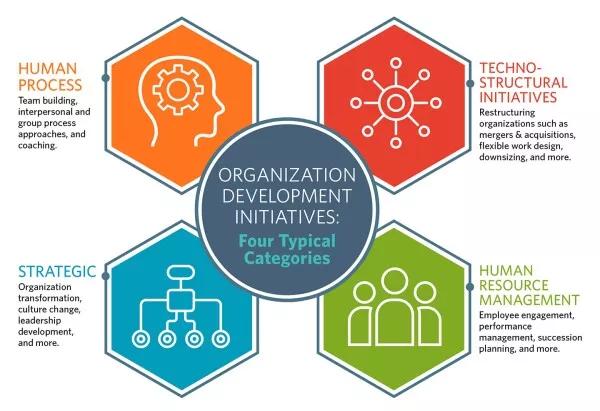
Typically, organizations categorize development initiatives as:
Human process initiatives that include team building, group process approaches, company culture, and coaching.
Techno-structural initiatives, or organizational restructuring. Common examples include mergers and acquisitions, flexible work design, and downsizing. Many organizations also prioritize business process engineering, total quality management, quality of work life, Six Sigma, and Agile models.
Human resource management initiatives that include employee engagement, employee experience, performance management, employee development, succession planning, coaching and mentoring, career development, and diversity awareness
Strategic initiatives that include organization transformation, culture change, leadership development, and attraction and retention initiatives.
Organizational development may track employees' career paths and professional development in their work through performance reviews.
Many HR departments use performance management systems and are data driven. OD uses both subjective and objective measures for customer satisfaction.
Most initiatives have elements of each category and operate on the day to day. TD professionals should align any OD solution to specific strategic objectives.
Skills for an OD practitioner
OD practitioners concern themselves with strategic planning and thinking, so these skills are musts for them. The Talent Development Body of Knowledge says that an OD professional should have skills in change management. They should also be efficient in designing solutions and knowledgeable in business advisory.
Additionally, they should be credible in strategic planning and well-informed as a consultant. Some of the skills included are data collection and analysis, project management, management skills, emotional intelligence, business acumen, communication, collaboration, and facilitation.
For the organization to succeed, an OD practitioner needs to recognize its needs, develop effective solutions, and achieve success. The practitioner must have the skills to identify what the organization requires. They also need to come up with solutions that work well.
Finally, they must be able to achieve success for the organization. The practitioner must be able to recognize what the organization requires. They must then develop solutions that have a significant impact. Finally, they must be able to drive the organization towards success.
An OD practitioner needs these skills to comprehend what an organization requires. They also need these skills to develop solutions and ensure the business thrives.
Use data collection skills to gather information that identifies areas for improvement. Project management skills ensure efficient and effective implementation of interventions. Management skills are crucial for leading and guiding teams through change. Emotional intelligence helps in understanding and managing emotions in oneself and others during the change process.
Business acumen is necessary for understanding the company's goals and objectives. Meanwhile, communication and collaboration skills are vital for working with stakeholders and moderating dialogue. Facilitation skills are important for guiding discussions and workshops to achieve desired outcomes.
Having these skills can help an OD practitioner drive change in the organization and contribute to the business's success.
OD practitioners create an alignment of strategy, structure, people, rewards, metrics, and management processes to improve efficiency and productivity in the workplace. These practitioners identify and solve problems in organizational systems. They focus on impact engagement, productivity, and performance. They may also lead initiatives that benefit individual growth, such as career development, management and leadership development, and performance improvement
OD professionals are adept at designing and implementing employee engagement strategies and smoothing communication between employees and work groups. They specialize in expressing and codifying talent and leadership principles, values, and competencies that guide the company's culture.
OD professional job descriptions may include recruitment skills, employee and management skills, and creative thinking skills.
Solutions
These are the steps an organization takes to mitigate or eliminate its root problem. No singular correct solution exists to any organizational problem. Possible solutions include assessments, coaching, job aids, role analyzing and redesign, team building, and training.
Here are five things to remember about the solution phase:
Take your time understanding the problem before rushing into a solution. Double check that you are operating under quality data.
People tend to be biased toward an effective solution. Remember, just because an initiative worked on one problem, that doesn't mean it will work on all the problems. For example, although training is critical, it is not a universal tool for solving all issues.
As an OD consultant or adviser, it is important to collaborate with the company and employees when implementing initiatives. This means working together as a team rather than working alone. By working together, you can ensure that everyone is on the same page and that the initiatives are successful.
Collaboration also helps consider different perspectives and ideas, leading to better outcomes. As such, key stakeholders must buy into the proposed initiatives and be accountable for implementation.
Improving an organization results in change, and many people are resistant to change. People resist change for various reasons. Some people resist change because they are comfortable with how things currently are. Others resist change because they don't understand why it is necessary. Some people resist change because they are tired of constant change.
Solutions generally occur at three levels:
Individual initiatives target one person and support their individual growth and development.
Team initiatives target a department or group of people and support their growth and development.
Organization initiatives target the entire organization to support its growth and development.
These solutions come from Ed Hasan's chapter in ATD's Organization Development Handbook.
What Can the Association for Talent Development Do to Help?
ATD can help OD practitioners improve their skills and knowledge with valuable resources and support.
ATD offers a wide range of professional development opportunities, including workshops, webinars, conferences, and certification programs specifically tailored to the needs of OD professionals. These resources can help practitioners stay up-to-date on the latest trends and best practices in organizational development. Also, opportunities to connect with other professionals in the industry for networking and collaboration are abundant with ATD.
Additionally, ATD provides access to research and publications that help practitioners deepen their understanding of organizational dynamics. Utilizing research improves their ability to drive positive change within their organizations.
When OD practitioners work with ATD, they get the resources they need to be successful in their jobs. They also gain valuable insights that can help them make a positive difference in their organizations.
Becoming a successful OD practitioner includes furthering your knowledge. Upskill in areas such as collaboration and leadership, performance improvement, business partnering and consulting, change management, talent management, and project management.
ATD offers a wide variety of content, education, and publications in these areas. For access to more resources, practical tools and templates, research, and insights, become an ATD member. Learn more.
For more information, explore these resources:

BLOGS
Organization Development & Culture Topic Page
FInd best practices and trends for developing the next generation of talent. Start here today!

NEWSLETTER
OD and Talent Management Newsletter
Insights and trends for improving an organization's capability. Sign up today!
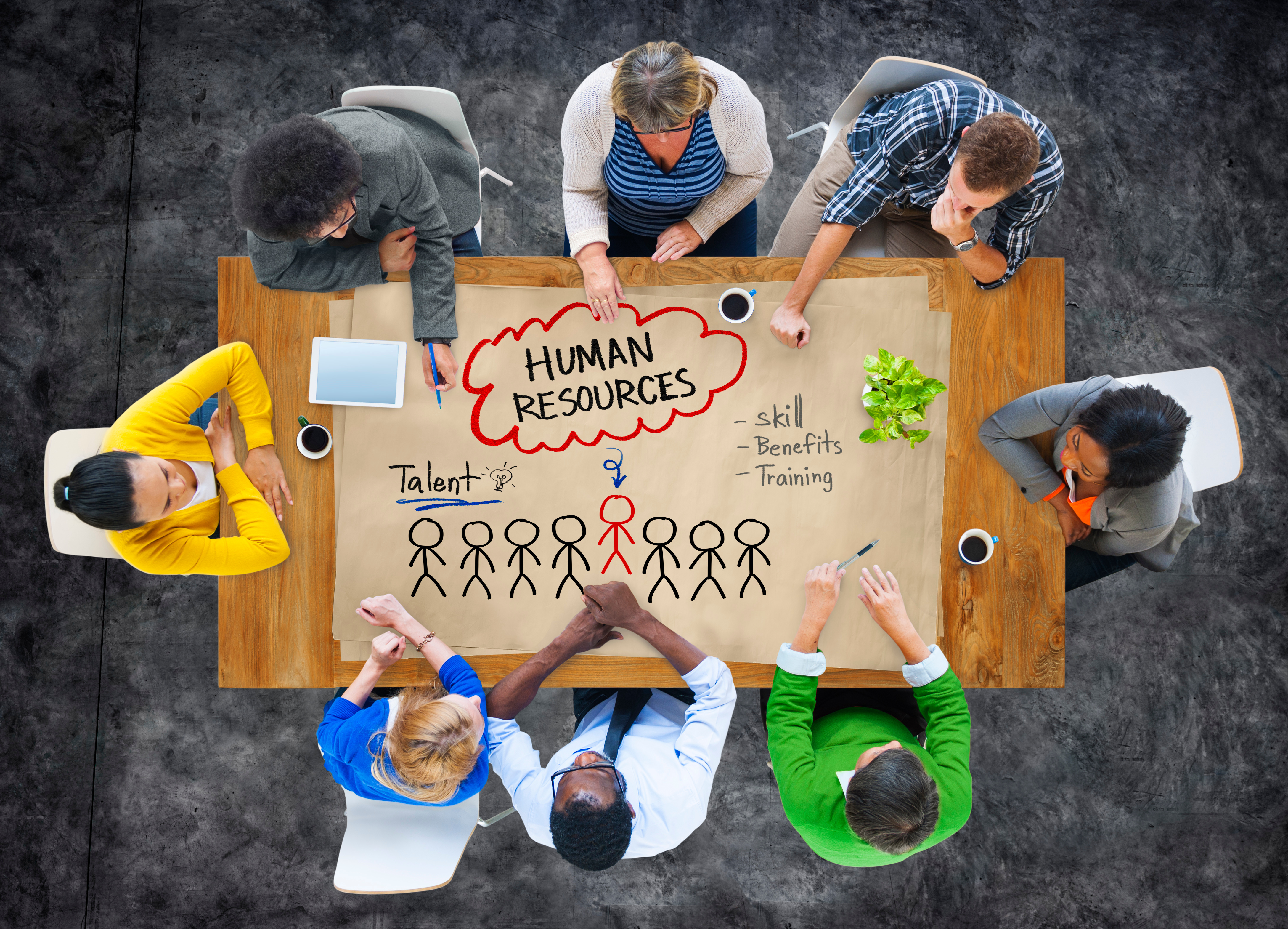
COURSES BY ROLE
Human Resources / Organizational Development Professionals
Discover courses for human resources and organizational development professionals, or TD professionals who crossover into HR/OD responsibilities. Explore courses!
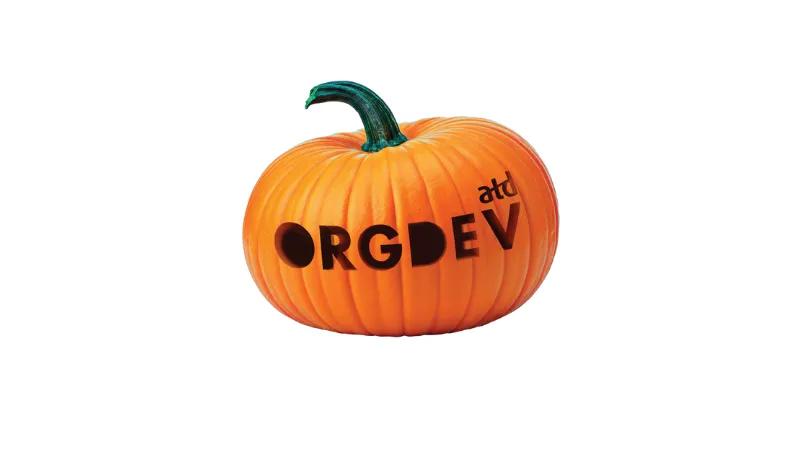
OCTOBER 20–22, 2025
ATD OrgDev
Learn to create a more inclusive culture, build talent retention, and create an engaged workforce.
There is still time to register!
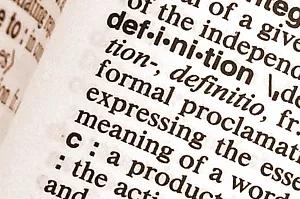
GLOSSARY TERM
Talent Development Glossary Terms
Learn about essential terms and need-to-know expressions for training and development professionals. Explore now!
Free E-Book: Remote Work Audit
You can use this remote-work audit to create a company culture that aligns with your values and mission. This will keep your employees connected and successful.
